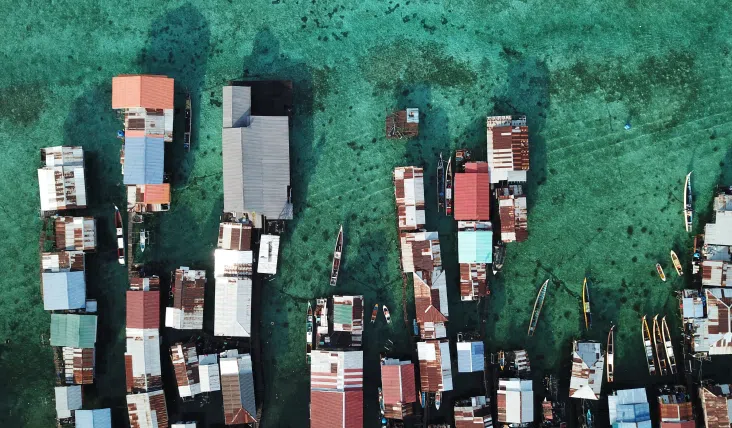
Environment & Climate Change, News
World Water Day 2016: The Value of Water
UN Global Compact Network Australia | March 22, 2016
To understand the importance of water, you only need to look back to the ‘Millennium Drought’ that crippled Victoria between 1997 and 2009. Or you could choose to go further back, much further back, thousands of years into human history. Credible theories from academics suggest that leading civilizations of their time, including Bronze Age empires in Greece, Egypt and Mesopotamia, as well as the prosperous Indus Valley civilization, in what is now Pakistan and Northern India, all have one thing in common: they were probably brought undone by epic droughts.
Scientists say those droughts lasted hundreds of years, dismantling entire empires, so the scale is immense, but anybody living in Victoria over the past two decades appreciates how precious a commodity is water.
In fact, the huge drought of 1997-2009 changed dramatically how Victorian government, business and residents now manage the state’s water supply.
As a Federal Government Productivity Commission report declared in 2011, water must be treated differently to other utilities such as gas, electricity or telecommunications because it is literally ‘essential for life’. The health of Melbourne, as a major city, is intrinsically connected to water. The ability of the city’s industry to thrive and expand needs an uninterrupted water supply. Outside the metropolis, the need for agriculture to access water is obvious. Community facilities and social life can wither and die without water, and that has been proven to have a substantial impact, economically as well as physically.
During the most urgent water restrictions of the Millennium Drought, when water could no longer be allocated for maintaining community infrastructure such as sports fields, some estimates costed the damage to ‘welfare in the community’ of no longer having such communal outdoor recreation facilities as between $400 million and $1500 million. Now consider the potential financial cost of water restrictions to individual households or businesses or, for that matter, the medical bills of Victorians who hurt their back lugging buckets of water from their shower to their dying flowerbeds. A major drought cripples a metropolis like Melbourne and a State like Victoria, on every level
From hygiene to hydration to food crops to grassy fields to the leaves on trees: water is the link that keeps society going. Just as efficient sewerage systems with sufficient capacity are essential for a modern city to function effectively and safely.
Yarra Valley Water has always maintained a long-term view of Melbourne’s water needs and our role in supplying this most precious commodity. We are an enthusiastic signatory to the United Nations Global Compact and we are currently investigating how we can align our business planning more closely with the Sustainable Development Goals, which outline a global framework for priorities, aspirations and benchmarks to progress environmentally friendly, sustainable development, and ensuring our employees feel committed and engaged in creating a better world.
Locally, our organisation has collaborated in planning for the city’s water future, towards 2060 and beyond. We are aware that Melbourne’s residents, who use two thirds of our supply, community organisations and local businesses cannot afford to endure the level of water restrictions demanded by the Millennium Drought.
The good news is that we’re confident we have many of the answers.
A major shift in thinking among the water industry has been to divide water into categories, known as ‘fit for purpose’. In the past, business water needs, sprinklers on sporting grounds, fire-fighting water, the water that filled every toilet cistern and the drinking water in every tap in every house came from the same fresh, pure water source, direct from our potentially over-stretched dams. But this does not have to be the case and increasingly is not. Integrated water cycle management now includes the harnessing of the city’s sewage and storm waters, previously regarded as unclean and removed from the city as quickly and discreetly as possible.
However, with the appropriate level of treatment, these rich resources can be harnessed for the myriad of water needs that do not require the sheer purity of Melbourne’s drinking water. Given it is estimated that the city generates around 540 GL a year of excess water through stormwater runoff alone, the benefits of capturing and reusing that water is obvious.
These realisations have driven the continuing evolution of the city’s water supply, with investment on all levels, from household rainwater tanks to transfer pipelines, and major new stormwater and sewerage infrastructure that is dedicated to rehabilitating and reusing these waters, rather than flushing it away. The state’s business community has bought in, dramatically dropping the overall use of water for industry (reducing usage from 138 GL (Gigalitres) in 2000/01 to 89 GL in 2010/11) and getting smarter. As an example, the proliferation of commercial car washes across the city could not have survived the drought or beyond had they not crafted a way to use recycled waste water/non-drinking water.
Yarra Valley Water is committed to providing our water services within the carrying capacity of nature. And we are committed to helping create better places for people to live. We have committed to supplying recycled water to around 100,000 homes or approximately 200,000 people in the northern growth area.
Victoria’s desalination plant is operational and ready to transform salt water to combat future climate change effects or major droughts, while Melbourne’s metropolitan water utilities are innovating to reduce or eliminate reliance on dams for the water needs of the city’s community spaces. Good things are being done across the city. South East Water’s Aquarevo project is Australia’s most water efficient large-scale housing development. It aims to cut household demand for mains drinking water by 70 per cent through greater use of recycled and rainwater. Across town, City West Water is currently spearheading the Greening the West initiative which amongst other things looks at new approaches to maximise sustainable water supplies to establish and maintain green space, increasing the liveability of our city.
Projects such as these are all around us, transforming Melbourne from a city reliant on its dams and making us a city that intelligently preserves drinking water while maximising the use of all the other forms of potential water. Our business community has worked with Yarra Valley Water to dramatically change the way it uses water, as well as which water it taps into, and the entire city can be confident of a healthy, rich future, from lush sports grounds and community resources to kitchen taps that deliver the pure drinking water we love.
Author
Pat McCafferty, Managing Director, Yarra Valley Water
Pat McCafferty was appointed Managing Director of Yarra Valley Water on 1 July 2014. He has extensive experience across the water sector and has held General Manager roles at Yarra Valley Water since 2001, covering a wide range of operational and strategic leadership positions including strategic planning, economic regulation, finance, marketing and customer service.
